This article is unlocked
If you enjoy this article, consider subscribing to gain access to weekly reports on Ecuador’s economics, politics, crime and more.
This article was published on May 26, 2020
However, the government is stressing the need to remain cautious and to follow the defined guidelines for social distancing, use of masks, handwashing and business operations.
As Cuenca and many other towns and cities move today into the Yellow designation under the COVID-19 restrictions laid out for the country, it is important to set a stake in the ground to see where things are at now, so that comparisons can be effectively made in the future. If cases begin to rise, the government has made it clear it will re-impose “Red” restrictions on cities, counties and even provinces if necessary.
The graphic below is provided by the government and is updated daily except for Sundays. The numbers and statistics below are based on all case data collected by the government as of 8:00 a.m. on Sunday, May 24, 2020.
As Cuenca and the country begin lifting COVID-19 restrictions, we will offer weekly comparisons to the data to see if there is an increased risk of infection of if the restrictions under the Yellow designation are effectively keeping the spread of the virus at a minimum. These comparisons will also be used to project when Cuenca and other communities may possibly be allowed to move to the Green designation under the current government guidelines.
Understanding the numbers
The first thing to be clear about is that Ecuador, like many countries across the globe, does not know the ACTUAL numbers of people infected by the coronavirus or the total number of deaths that can be attributed to COVID-19. The numbers in the graphic below reflect the number of people who tested positive or negative for the virus, for both the polymerise chain reaction or (PCR) test which looks for antigens and identifies the presence of the virus in the body, and the “Rapid” test which looks for antibodies to the virus and identifies a person’s immune response to the virus. The PCR test gives an earlier identification of those who have been infected by the coronavirus.
These numbers do not reflect the actual total number of people infected across the country or the number of deaths that can be attributed to COVID-19. The dates on the graphic are also adjusted back to when symptoms began, not when the positive test occurred.
Ecuador’s first reported case—a 70-year-old woman—of the coronavirus was announced by the Ministry of Health on February 29, 2020, two full weeks after the patient arrived in the country from Italy on February 14, 2020. At that time, Ecuador was still allowing international travelers into the country, only activating “greater surveillance” at the airports for travelers from the countries—China, South Korea, Italy, and Iran—reporting the highest numbers of COVID-19 cases.
The next day, the government confirmed that the case number had risen to 6, with 5 new patients who were relatives of the first female coronavirus patient. Three days later (March 4, 2020), three more family members and people of the “primary nucleus” of the first patient tested positive for the virus.
A week later Ecuador decreed a health emergency on March 11, after the declaration of a pandemic made by the World Health Organization (WHO).
On March 12, 2020, the Ministry of Health confirmed that the number of cases of COVID-19 had grown to 19 and that 200 more people were in an “epidemiologic fence,” or quarantine, in an attempt to prevent the spread of the virus.
That day, the government also announced the formation of the National Emergency Operation Committee (COE), which would be the entity that would coordinate the health emergency in the country. The Foreign Minister of Ecuador, José Valencia, also announced that effective immediately, any individuals arriving from the Chinese provinces of Hubei and Guangdong, Spain, France, Iran, Germany, South Korea and Italy would be required to be placed in mandatory isolation for 14 days.
By the next day, the number of cases had grown to 23 and the first patient had died (the initial patient that entered the country from Italy on February 14, 2020).
On March 17, 2020, Ecuador began enforcing a curfew nationwide and from 9 p.m. to 5 a.m. that also included restrictions on driving, provincial border closings, closure of non-essential businesses and a limitation on the number of people who could be allowed into banks, markets and pharmacies to one-half of normal capacity.
By this point, unknown until much later, the case number of infected patients was at least 2,591 and had grown exponentially in just a matter of weeks.
Confusion, Lack of Testing and Tighter Restrictions
During the initial weeks of the pandemic, there were multiple problems that impacted the government’s ability to track the impact of the virus.
While the country was quick to adopt restrictions and require social distancing in the early days of the pandemic, the graphic below illustrates that by the time strict requirements were put into place (March 17, 2020), the country had already begun to see a rapid spread of the virus and the ability to enforce an “epidemiologic fence” had likely become impossible.
Probably the most impactful influence on the spread of the virus was a lack of concern or adherence to the social distancing guidelines among a subset of the population in the country’s financial center, Guayaquil. On March 25, 2020, when the curfew in Guayaquil had been extended to the hours between 2 p.m. and 5 a.m., the Minister of Government (Interior), María Paula Romo, announced that nearly a thousand people in the city had been arrested for failing to comply with the curfew that was decreed on March 17, 2020.
The situation in Guayaquil quickly exploded with the virus spreading through both the slums and exclusive suburbs around the city. While the numbers below do not show the actual impact of the virus on Guayaquil, there have been estimates that at least 5,700 and possibly up to 6,700 people died in the city in the first two months of the pandemic. After an international publication reported that bodies were “piling up in the streets” of Guayaquil, the Federal government stepped in to take over removal of bodies, reporting that it collected 100 from homes in the city on March 28, 2020.
The graphic below also illustrates that those provinces that are closely linked to Guayaquil (either by highways or air travel) have also had large numbers of cases—the western 1/3 of the country accounts for nearly 2/3rds of the confirmed cases in the country.
Throughout the rest of March and into April, the number of cases throughout the country grew by the hundreds (and in some cases thousands) per day and the government continued to adjust the curfew and extend the restrictions it had in place.
In late March, the government also started reporting the age groups for those people who tested positive for the coronavirus, with a surprising twist. Unlike Italy and Spain who were at the time leading the world in coronavirus cases, and who were seeing the majority of their patients in the elderly population, Ecuador reported on March 25, 2020, that 61% of the those who tested positive were between 20 and 49 years of age, 23.1% were between the ages of 50 and 64 and only 10.8% were 65 or older.
[This trend would continue through the months of April and May with slight variation in the numbers.]
By March 31, 2020, only 8,000 tests had been given to confirm COVID-19 throughout the country; 27.9% of those tests came back positive.
Throughout April, the numbers of infected continued to grow at a rapid rate, while the ability for more testing slowly increased (on April 8, 2020, Minister Romo reported that 15,526 samples for testing had been collected, though roughly 10,000 of those samples still had not been tested by April 14, 2020 and of the 27,688 samples taken by April 16, 2020, 11,731 had still not been processed).
The government also reported that it was using a GPS application to track people on their phones who had been placed under quarantine. It warned that the penalty for violating quarantine is up to three years in jail. Minister Romo also announced that the government was developing a “traffic signal” system to inform citizens of the restrictions being implemented nationwide and within each province and city.
Responding to claims that the government did not have accurate figures on the number of people who died from COVID-19 in the city of Guayaquil in the first 8 weeks of the crisis, on April 18, 2020, the Chief of the Joint task Force, Jorge Wated, said that the “usual monthly average of deaths (in Guayas) is approximately 2,000 people,” the gap at this point would be about 5,700 deaths above the usual,” which Wated attributed to “different causes: COVID, alleged COVID and natural deaths.” The country did begin recording “probable deaths” related to COVID-19 in mid-April, but these numbers were only in the low hundreds.
While the country was under tight travel restrictions, repatriation flights were being allowed into the country during April. Anyone repatriated to Ecuador was required to spend 14 days in quarantine in a supervised hotel, hostel or government infrastructure, at the expense of the individual.
On April 23, 2020, the numbers of positive test results for the coronavirus in Ecuador went from 11,183 to 22,160, an increase of 10,977. This was the result of the government’s efforts to solve its testing problems by hiring outside firms to complete the testing process for all the samples that had been “dammed,” or stuck in a backlog. In the graphic below, the numbers from this increase have been logged to the date of the original symptoms, so there is no evidence in the graph of this large influx of test results.
Decreasing Numbers but Wariness to Reopen
As the coronavirus crisis crossed into May, the government announced that the country’s restrictions would be moving from “isolation” to “social distancing,” and that certain industries and businesses would be allowed to reopen at the discretion of each local government, based on the traffic signal system.
Also, on May 1, 2020, the Vice Minister of Health, Xavier Solórzano reported that Ecuador reported a decrease in confirmed daily coronavirus cases. “The good news is that you are seeing a decrease in the number of cases that have appeared in recent days, without this meaning that the situation has passed, but at least the transmission speed has decreased.” Of note with regard to the graphic below, on May 1, 2020, Ecuador also began tracking “Epidemiologic Discharges,” which are essentially end of treatment courses for outpatients.
On May 4, 2020, Ecuador moved on to new levels of restrictions under the traffic signal system built around its move from social isolation to social distancing. The new guidelines under “Red, Yellow and Green” traffic signals, were presented to all the municipalities on May 3, 2020, and nearly every local government chose to remain under “Red” for the immediate future.
In the new model, the rules under the “Red” light are:
- Compulsory isolation of those over 60 years old and for people whose medical condition puts them in a vulnerable situation against COVID-19.
- Obligatory use of masks, the prohibition of public events and outdoor sports.
- The limitation for premises in operation of essential areas (food, medicine and banks) to operate at 50% capacity.
- The suspension of face-to-face classes and the prohibition of inter-provincial passenger transport continues.
- Continuation of closed land and air borders (only return flights of nationals and humanitarian flights provided for in the protocols are allowed); interprovincial transport of parcels is authorized.
- Authorization for commercial activities by ordering by telephone or online and home delivery. The hours of home delivery of products are extended from 07:00 to 22:00, and taxi service is allowed between 05:00 and 22:00, according to the restriction according to license plate number.
- The suspension of the face-to-face workday is maintained, except in essential sectors, and according to the last license plate number, one day of car circulation is allowed per week, but not on weekends.
- Curfew is maintained between 14:00 and 05:00 and there is additional work authorization only in pilot projects authorized by the COE.
Once municipalities move to the Yellow light, the rules are:
- In public institutions, priority will be given to teleworking, but face-to-face work can be resumed with a maximum of 50% of its staff at the same time, while in private all non-essential sectors, businesses decide when to return to activities.
- Outpatient care for all medical specialties is authorized, the curfew is reduced from 6:00 p.m. to 5:00 a.m., urban and inter-parish transport is authorized with a maximum occupancy per unit of 30%, and vehicle circulation is increased two days a week, depending on the last digit.
- Commercial activities in premises may operate with a maximum capacity of 30% of normal capacity.
Finally, under the Green light, the rules are:
- Employees can resume face-to-face work with a maximum of 70% of staff at the same time, but priority should be given to teleworking.
- The movement of vehicles is defined by odd or even plates, the curfew is in force between 9:00 p.m. and 5:00 a.m., the outpatient service of all medical specialties and liberal professions is authorized, and the operation of shops with a maximum capacity of 50%.
- In addition, urban, inter-parish and inter-cantonal transport is authorized with a maximum occupancy of 50%.
On May 3, 2020, Minister Romo announced that almost all of Ecuador’s municipalities (200 of 201, the exception being Duale who requested to move to Yellow) chose to stay under the Red-light regulations. [Duale was joined by Palora and Santiago in the province of Morona Santiago on May 11, 2020.]
Database is Corrected and Test Backlog Continues
Finally feeling like it had a good handle on the numbers it was collecting, the government announced on May 6, 2020, that it was adjusting its numbers for both the number of positive test results and the number of deaths in the country from COVID-19. This correction was based on the “cleaning” of 2,461 tests it said corresponded to duplicate cases.
Surprisingly, while it reduced the number of positive tests from 31,881 to 28,420, it increased the numbers of COVID-19 related deaths to 1,618 from 1,569. As it had since mid-April, it also reported that there were probably another 1,628 deaths that were related to COVID-19.
The Minister of Public Health, Juan Carlos Zevallos, reported that the new numbers were verified as the country moved off an old data collection system and onto a new one. With the new system, the information of the VIEPI (Public Health Surveillance System) and the INSPI (National Institute of Public Health Research) was integrated so that hospitals and laboratories directly register the test results, via the internet.
“In the previous platform, the VIEPI and INSPI information were integrated manually through Excel files, without validation of data with the Civil Registry, which has not infrequently generated errors.”
Throughout the middle of May, the government continued to adjust numbers as it worked to review all of the data that had been collected since mid-February. It again reduced the number of positive test results and increased the number of deaths associated with COVID-19 from May 9-11, 2020.
“The new system reclassifies the registrations by people’s identity card, not by the number of tests that have been done,” the Public Health Ministry said in a statement on May 11, 2020.
While Ecuador continued to get a better handle on the information in its database in early May, its problems with clearing its backlog of test samples did not go away. Though it made a large dent in the number of tests dammed in late April, it continued to run near 20,000 samples untested into mid-May. On May 15, 2020, it still had 21,506 samples that had yet to be tested.
Travel Requirements and a Slow Reopening
In response to a flagrant case of abuse of the repatriation system being used to bring Ecuadorian nationals back to the country, on May 17, 2020, Government Minister, María Paula Romo announced that Ecuador will require those who wish to enter the country to submit PCR tests for the diagnosis of coronavirus, to certify that the passenger is free of the disease.
“To travel to Ecuador, the PCR test that certifies that the passenger gave a negative test, carried out a maximum of 72 hours before boarding, will be mandatory,” reported Romo, noting that the obligation “begins this Thursday (May 21, 2020) at midnight.”
Those who arrive will be subjected to rapid tests as well, she said while revealing—without further details—that two passengers “arrived in the country not only knowing that they were COVID-19 positive, but that they had abandoned their hospitalization to travel! Cases like these oblige us to take new precautions.”
The Minister also announced via Twitter that the curfew under the Yellow traffic light designation was changed 6 p.m. to 5 a.m., to 9 p.m. to 5 a.m. effective immediately.
On Friday, May 22, 2020, The Ecuadorian Government adopted additional measures for the social and economic reactivation of the country after more than two months of quarantine, and announced that it is the responsibility of the municipalities to assess the decision to change their designation, according to the individual evaluation they carry out, and then to submit a request to change to the COE.
As of 9:00 a.m. on Tuesday, May 26, 2020, a total of 35 of the 221 cantons across Ecuador had moved from Red traffic light designation to Yellow. Those currently under Yellow designation are:
- Paute, El Pan, Sevilla de Oro, Cuenca, Gión, Gualaceo, Nabón, Santa Isabel and Guachapala in the El Azuay province.
- Azoguez, Cañar, Suscal in the Cañar province.
- Guayaquil, Daule, El Triunfo, Milagro, Samborondón, Lomas de Sargentillo in the Guayas province.
- Loja y Calvas in the Loja province.
- Santiago, Palora, Pablo Sexto, Gualaquiza in the Morona Santiago province.
- San Miguel de los Bancos in the Pichincha province.
- Santa Elena and La Libertad in the Santa Elena province.
- Santo Domingo and La Concordia in the Santo Domingo de los Tsáchilas province.
- Lago Agrio in the Sucumbíos province.
- Ambato in the Tungurahua province.
- Chinchipe in the Zamora Chinchipe province.
- Machala in the El Oro province.
- San Cristóbal and Santa Cruz in the Galápagos province.
On Wednesday, May 27, 2020, Cumandá in the Chimborazo province and Cevallos in the Tungurahua province will go to Yellow. On Thursday, May 28, 2020, Durán in the Guayas province will go to Yellow and on Monday, June 1, 2020, three more communities are slated to go to a yellow designation, Riobamba in the Chimborazo province, Sozoranga in the Loja province and Baños in the Tungurahua province
Aguarico, in the Amazon province of Orellana, remains the only canton that has moved under a Green light designation.
Graphical Highlights
Here is a quick review of the graphical highlights below (as of Sunday, May 24, 2020 at 8:00 a.m.):
- 3,108 deaths have been attributed to COVID-19
- Another 1,986 deaths are “suspected” to be attributable to COVID-19
- 106,079 test samples have been taken collected
- 36,756 tests have returned positive (+)
- 45,743 tests have returned negative (-)
- 23,580 test samples remain “dammed” in the testing process
- 55.9% of the deaths have been among the ages 20 to 49 years old
- 24.5% of the deaths have been among the ages 50 to 64 years old
- Only 16.4% of the deaths have been among the ages 65 years and older
- 56% of cases have been on males, 44% in females
- Guayas province accounts for 49.6% of confirmed cases (13,787) and 43.8% of the confirmed deaths (1,362)
- Pichincha province accounts for 12.2% of confirmed cases (3,405) and 8.2% of the confirmed deaths (256)
- No province has escaped deaths due to COVID-19

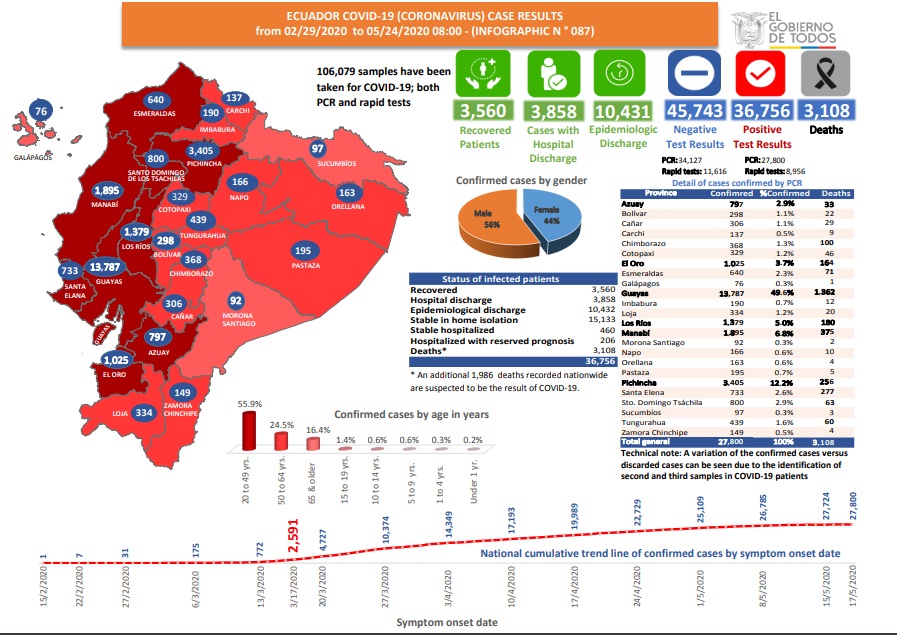
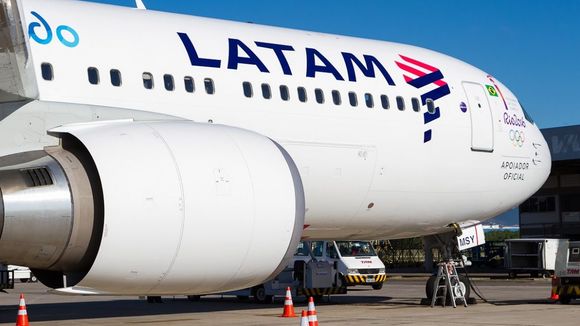
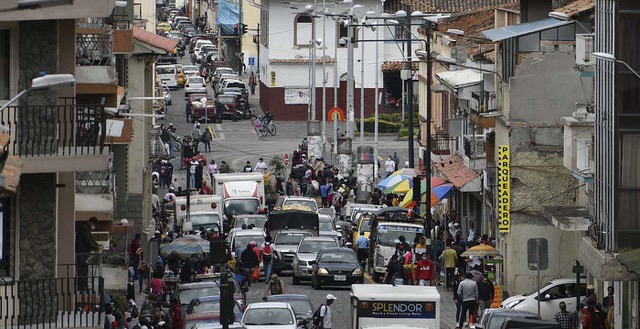
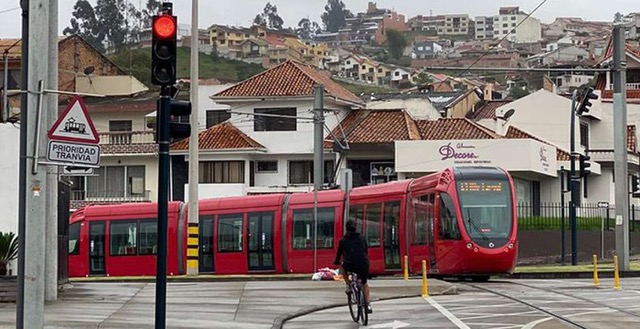
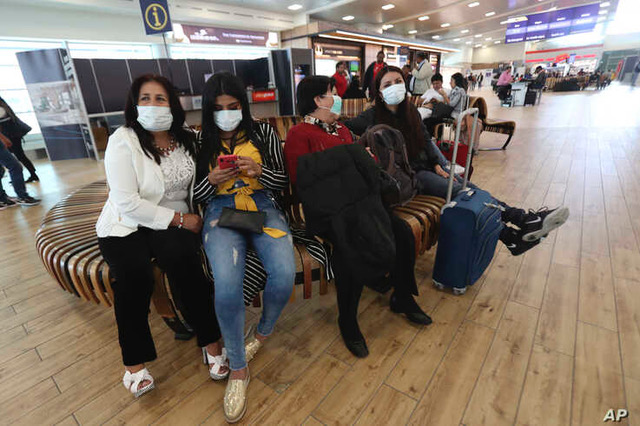
0 Comments